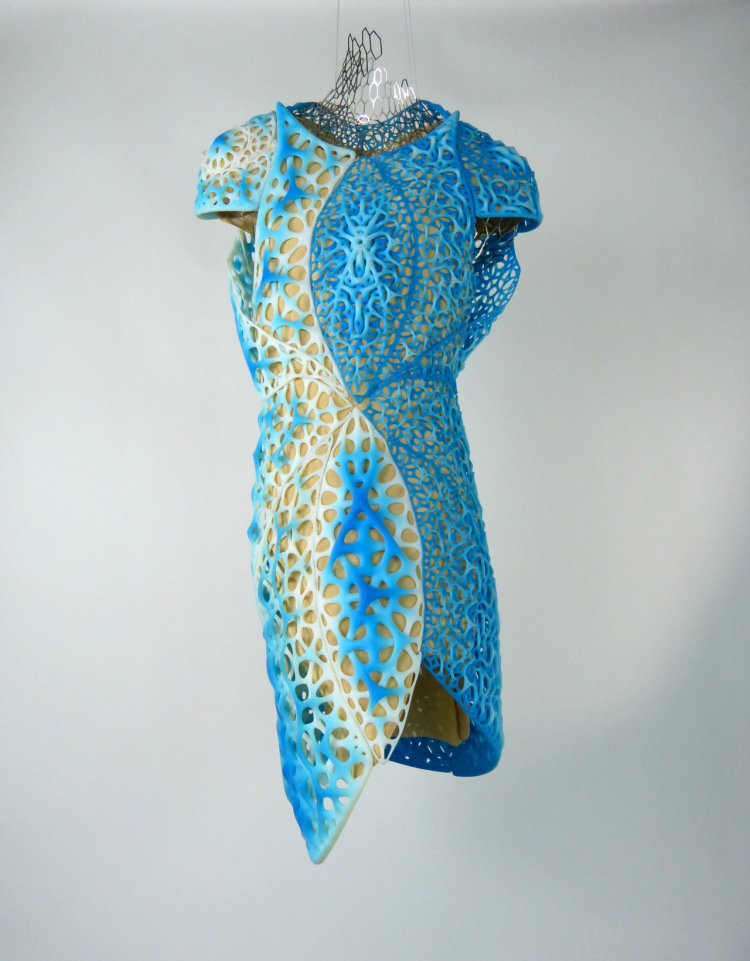History of 3D printed clothing: from fragile figured constructions to flamboyant armor

Modern brand ThreeASFOUR opted to use 3D printers to revolutionize the world of fashion. But the tremendous ambitions to print a superhero costume resistant to water, fire, and bullets confronted the harsh reality. The founder of the company Gabi Asfour has been into additive technologies for 8 years, but things go not as fast as he would like them to. Capabilities of 3D printers are limited to printing clothes that look like armor and cling to the body.
ThreeASFOUR organized the first show of 3D printed clothes three years ago at the Jewish Museum in New York. A model in a fragile figured dress resembled an angel or a robot. But she could hardly move and was afraid to sit down because she could damage her expensive dress.

Further, ThreeASFOUR decided to make a step back and started to develop unique 3D printed fabrics. Recent inventions of the company include a fabric created with three-dimensional knitting that can stretch in three directions. Asfour believes that such fabrics will breathe and will not encumber movements.
To achieve their goals, ThreeASFOUR began working with a well-known company Stratasys and other experts in the field of additive technologies. New, more elastic and less fragile materials for 3D printing appeared in the market at that time.
In the end, a startling collection named Biomimicry was presented to the world last year. One of the dresses – Pangolin – looked like the mammal’s scale. To create a unique natural cloth pattern, designers used an algorithm that simulated cell division. The dress turned out to be rather original. So that’s no wonder that Björk chose it for one of her performances.
Another interesting dress – Harmonograph – was designed to resemble a sound wave and created using rubber screen cloth. It can stretch and shrink, adjusting to human movements.

The latest novelty has been released by the company this year – a dress with lattice pattern, which consists of 30 parts. All parts were printed separately and afterward assembled in a single dress. Looks impressive.

Unfortunately, ThreeASFOUR clothes are not as comfortable as Asfour expected. They cling to the body and are not nice to touch. But the progress is obvious and the next collection will possibly start a new era of 3D printed clothes.
Currently, experts state that until appropriate materials for 3D printing are invented, 3D printed clothes will look more like art objects than everyday things.







